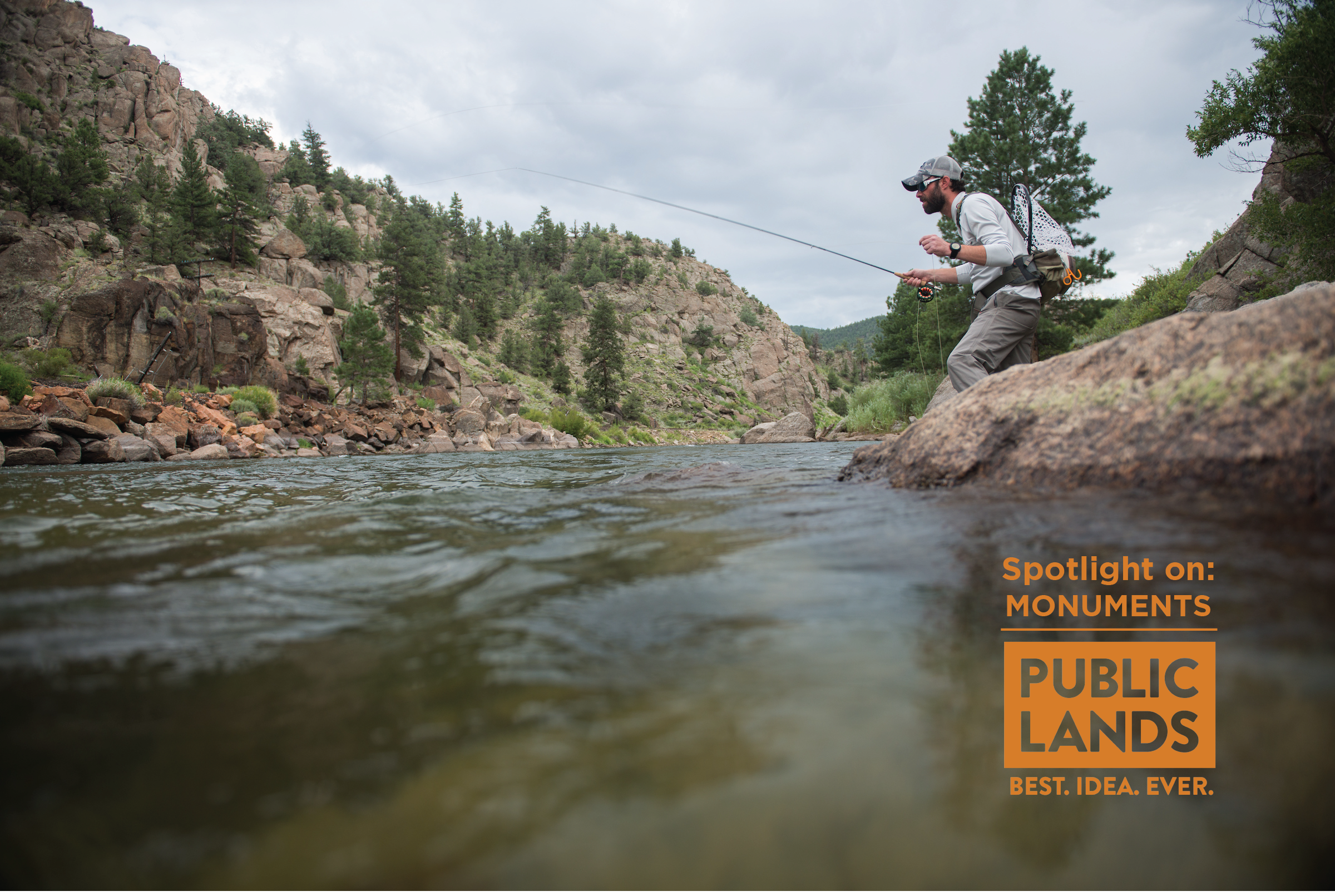What would Theodore Roosevelt do? He’d protect Browns Canyon.
By Corey Fisher
The green drake hatch on Penns Creek. Browns slurping midnight Hex on the Pere Marquette. Salmonflies on Montana’s Madison River. The brown drakes of Silver Creek. These are some of America’s most celebrated moments in fly-fishing, but Mother’s Day caddis on Colorado’s Arkansas River just might top them all. Feel free to argue that point – many have and it remains unresolved – but there is no debate that the Arkansas River is one of the top trout fisheries in the country, with anglers flocking to this river every spring, especially the section flowing through the public lands of Browns Canyon National Monument.
The popularity and productivity of the Arkansas River has earned 102 miles of the river Gold Medal status, a class bestowed to only a handful of waters in Colorado. As a national monument, Browns Canyon will remain just the way it is today, but it took decades of efforts by a group of tireless river advocates to ensure that the Browns Canyon and the Arkansas River would be protected for future generations.
The first legislative effort to protect Browns Canyon came in 1991, when Colorado’s Republican Senators Wayne Allard and Dan Schaefer introduced legislation that would have designated Browns Canyon Wilderness as part of a comprehensive wilderness package for Colorado, but the bill was killed in committee. Over the next two decades, similar proposals to protect Browns Canyon were introduced by members of both political parties and all met a similar fate. Despite widespread support from state and local government, hunters and anglers, numerous local businesses, and other stakeholders, legislation was unable to get over the finish line.
Faced with a Congress that would not or could not pass legislation to enact the will of the people, supporters of Browns Canyon turned to another tool: the Antiquities Act. Over a century ago, Congress recognized that there was need to ensure that public lands of historic or scientific interest could be conserved as national monuments through executive action by the president. Known as the Antiquities Act, it was signed into law by Theodore Roosevelt and has since become one of the most successful conservation tools in American history.
Finally, after a quarter-century of bi-partisan effort, on Feb.19, 2015, President Obama designated 21,586 acres of public lands along Browns Canyon as a national monument. This is the beauty of the Antiquities Act: when faced with decades of Congressional deadlock, the act is a tool that provides a path forward to see widely-supported conservation initiatives through to fruition.
Theodore Roosevelt once said, “The nation behaves well if it treats the natural resources as assets which it must turn over to the next generation increased; and not impaired in value.” Combined with efforts to clean up abandoned mines in the headwaters of the Arkansas River, the protection of Browns Canyon National Monument will ensure that this fishery will not only remain great, but will increase in value. I think that Roosevelt would be proud that his law – the Antiquities Act – is still being used today to fulfill this vison for conservation.
Read National Monuments: A Sportsmen’s Perspective to learn more about the Antiquities Act.



